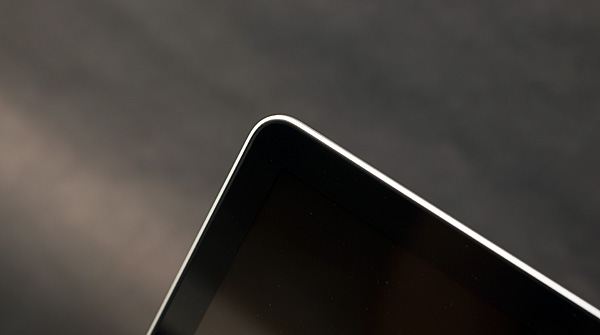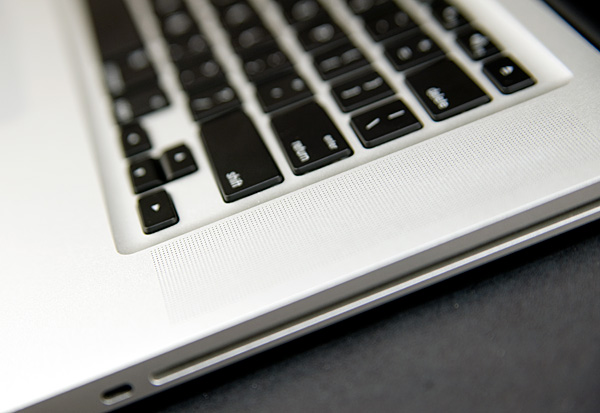Apple's 15-inch Core i5 MacBook Pro: The One to Get?
by Anand Lal Shimpi on April 14, 2010 10:38 PM EST- Posted in
- Mac
- MacBook Pro
- Arrandale
- Core i5
- Laptops
Final Words
Last year's unibody MacBook Pro update didn't do much for performance, but it did wonders for battery life. The huge increase in battery capacity meant Apple's entire pro line of notebooks could be used on cross-country flights or even during a long day of meetings without needing a recharge.
If you needed a Mac laptop at the end of last year, the 2nd gen unibody MacBook Pro was great simply because of its battery life under OS X.
The new Arrandale MacBook Pro delivers the same (or better) battery life compared to last year's model but with anywhere from 0 - 50% better performance. Apple is also offering some nice options including a higher resolution screen for the 15-inch model.

If performance matters to you, this is the MacBook Pro you've been waiting for. While I don't believe owners of the previous generation unibody need to upgrade, if you've got an older notebook this is the one to get.
The new model isn't without its drawbacks however. The most obvious of which being price. At $1799, even the cheapest 15-inch MacBook Pro is very expensive. You're paying for the design, build quality and ultimately the right to use OS X. If those things don't matter to you (particularly the OS X item) then you'd be much better off with an ASUS or Dell. The only consolation here is that the 2.4GHz Core i5 is fast enough if you thought the previous generation was quick. While I'm not sure about the 2.53GHz Core i5, the i7 is definitely worth it if you plan on keeping the machine for a while. I originally stated that I didn't believe the i7 to be worth the upgrade. Since then I managed to get my hands on an i7 system and noted its greater-than-expected performance; my conclusion has been updated to reflect that. The 22% increase in total system cost comes with a 11 - 15% increase in performance in most CPU intensive applications thanks to the extra clock speed and cache. It's a shame that this sort of performance isn't available in the 13-inch model yet, although I suspect it's related to the next point:
With a Core i5 and GeForce GT 330M, the new MacBook Pro can get uncomfortably warm under use. I found that the previous generation unibody ran cooler. Intel expects to see Arrandale power consumption go down sometime after the middle of the year with a future rev of the processor. I'm guessing that's what'll be used in the inevitable Fall update to the new MacBook Pro lineup.
Apple's inclusion of auto switching between the Intel HD Graphics and NVIDIA GeForce GT 330M is nice, however I'd still like the ability to force the GT 330M off entirely when I'd like to keep my lap cooler.
For being as forward looking of a company as it is, Apple continues to drop the ball on making a good SSD standard. Intel's X25-M G2 isn't expensive, what's stopping you Apple?

If you're curious about what's next, I have two words for you: Sandy Bridge. Due out sometime in Q1 2011, Sandy Bridge looks incredible based on early performance data. No word on when we'll see it in notebooks but if you like torturing yourself, waiting for Sandy Bridge will pay off.










114 Comments
View All Comments
san1s - Wednesday, April 14, 2010 - link
This or one of the new Sony Vaio Z series?rowcroft - Thursday, April 15, 2010 - link
I chose the Sony Z- love the size and was able to get it with the i5 and a SSD for around $1,900. 3.5lbs and 1600x900 13" was too much for me to resist (and I do like OS X).androticus - Friday, April 16, 2010 - link
I just tried out a Z at the Sony Store -- sweet! The 15" MBP is huge and heavy by comparison. I really feel that Apple is not offering a compelling upgrade this time -- and even upping the base model price by $100!SandmanWN - Wednesday, April 14, 2010 - link
Steep price for only 5400 rpm drives!All that room and can't add a number pad to the keyboard.
The plug on the power brick has got to be annoying sometimes.
Nice resolution on the screens.
Overall for the price the attention to detail is kind of disappointing. Not to mention the styling feels sooooooo old now.
Brian Klug - Wednesday, April 14, 2010 - link
Honestly, I'm really confused why they're shipping 5400 RPM drives as well. Ordering online, the 7200 RPM drives are a whole $50 more, which, in the big perspective of things is change next to the MacBook price.It seems like the volume discount from shipping exclusively 7200 RPM drives on a "pro" machine would've made more sense than a bunch of default configurations with 5400 RPM drives destined to sit in stores.
-Brian
randfee - Thursday, April 15, 2010 - link
styling = old? Kidding me?The Style is rather new, just one and a half years now, isn't it? The prior design lasted for 6 years and my mid 2007 MBP still looks stunning, a timeless design and the aluminum surface is VERY durable. Comparing my almost three year old one to a most other brands with the same age makes people say mine looks like new.
ltcommanderdata - Wednesday, April 14, 2010 - link
I'm still curious why Apple chose the nVidia GT330M with it's 23W TDP. ATI's Mobility HD5650 is supposed to have a TDP between 15-19W, while still being faster so would seem like the ideal choice if performance/watt is the major concern. Hopefully, Apple developing their on dynamic GPU switching implementation was motivated by trying to make a GPU agnostic method to not be tied to say nVidia and Optimus. Presumably, the GT330M drivers are more mature in OS X due to similarity with existing nVidia GPUs and that combined with price and bundling offers with the 320M cause Apple to choose nVidia in this round, but hopefully ATI isn't permanently locked out of Apple notebooks.It's also interesting to note that the GT330M is underclocked at 500MHz core versus up to 575MHz and 1100MHz shaders versus up to 1265MHz being supported by nVidia. Apple's clocks actually match the GT230M. If this was done to reduce power consumption and thermals, that's another reason the HD5650 would have been a better choice.
jimhsu - Thursday, April 15, 2010 - link
Or simply opting for 335M (50% more shader cores) would boost graphics performance even more. Though with the heat comments, maybe that isn't such as good idea. I'm reminded with the quite unsatisfactory heat performance (i.e. OMG WTF THIS IS BOILING) of my first gen Macbook Pro (early 2006) with some of the comments in this article. Worrisome. Care to post some temps?redbone75 - Thursday, April 15, 2010 - link
I would guess it's because Nvidia, not ATI, is their partner and they have to honor that relationship. Think of how p/o'd Intel was when Apple ditched them in favor of Nvidia's chipsets.MySchizoBuddy - Wednesday, April 14, 2010 - link
based on the table Core i5 540M looks better than Core i7 620M